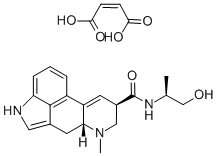
Product Details:
CasNo: 79-06-1
Molecular Formula: C3H5NO
Appearance: White powder
Delivery Time: 2 weeks after order
Throughput: 100KG/Month
Purity: 99%
Synonyms: ETHYLENECARBOXAMIDE; ACRYLAMIDE-HG; ACRYLAMIDE HGX; ACRYLAMIDE MONOMER; ACRYL-40(TM); ACRYLIC ACID AMIDE
Boiling point: 99.9±23.0 °C at 760 mmHg
Bulk density: 500kg/m3
Density: 1,322 g/cm3
Vapor density: 2.45 (vs air)
Vapor pressure: 0.03 mmHg at 40°C
Flash point: 138 °C
Pka: 15.35±0.50
Refractive index: 1.460
Solubility: 2040 g/L (25°C)
PH: 5.0-7.0 (50g/l, H2O, 20℃)
Water Solubility: Acrylamide is routinely tested at 250 mg/mL in water, giving a clear colorless solution. It is soluble at least to 40% (w/v) in water, and reportedly up to 215 g/100 mL in water at 30°C.
Sensitive: Light Sensitive
Stability: Unstable. Do not heat above 50C. Explosive. Incompatible with acids, bases, oxidizing agents, reducing agents, iron and iron salts, copper, aluminium, brass, free radical initiators. Air sensitive. Hygroscopic.
Description:
Acrylamide is a white crystalline chemical substance and is a raw material for production of polyacrylamide. Solid acrylamide (abbreviated AM) is usually colorless and transparent flaky crystals with pure product being white crystalline solid which is soluble in water, methanol, ethanol, propanol, and slightly soluble in ethyl acetate, chloroform, and benzene. It can be hydrolyzed to acrylic acid in acidic or alkaline environment.
Acrylamide is a large class of the parent compound of monomers including methacrylamide, the AMPS (anionic monomer, 2-Acraylamide-2-Methyl Propane Sulfonic Acid), the DMC (cationic monomer, methyl-acryloyloxyethyl trimethyl ammonium chloride) and N-substituted acrylamide compound.
Occupational exposure is mainly seen in acrylamide production and the synthesis of resins, adhesives, etc. It is also possible for contract in underground construction, upon soil improvement, painting, paper industry and garment processing.
At daily life, people can touch it in smoking, drinking and eating the starchy foods processed at high temperature.
Uses:
1. It can be used as a monomer of polyacrylamide. Its polymer or copolymer is used as chemical grouting materials, soil conditioners, flocculants, adhesives and coatings.
2. Polyacrylamide, when used as a kind of additive, can improve the oil recycling efficiency. When used as flocculants, it can be used for sewage treatment. It can also be used as a paper strength agent.
3. Acrylamide is the most important products in acrylamide and methacrylamide-based products. Since its application in industry in 1954, the demand gradually increase. It is mainly used for the preparation of water soluble polymers which can be used as additives to improve oil recovery; as a flocculant, thickening agents, and paper additives. A small amount of acrylamide is introduce the hydrophilic center into the lipophilic polymer to improve the viscosity, increase the softening point and improve anti-solvents ability of resin, and can aso introduce a center for the coloring property of dye. Acrylamide is also often used as a component of the photopolymer. For the vinyl polymer, its crosslinking reaction can take advantage of this kind of reactive amide groups. Acrylamide can co-polymerizze with certain monomers such as vinyl acetate, styrene, vinyl chloride, vinylidene chloride, and acrylonitrile to obtain a polymer with a variety of applications.
The main application areas: (1) used for the oilfield; the materials can be used in oilfield injection of wells for adjustment of the injection profile. Mix this product with initiator, and deaerator and inject into the high permeability layer part of water wells. This will lead the formation of high-viscosity polymer unearth of the stratum. This can plug the large pore, increase the swept volume of oil, and enhance the oil recovery. In addition, the product polymer or copolymer can be used for tertiary oil recovery, fracturing, water shutoff, drilling mixing process and chemical grouting. (2) It can be used as flocculants. Its partially hydrolyzed product and its graft copolymer of methyl cellulose can be used in wastewater treatment and sewage treatment. (3) Soil conditioner; using the hydrolyzed product as soil amendments can aggregate soil and can improve air circulation, water permeability and water retention. (4) Modification of fiber and resin processing; using acrylamide for carbamylation or graft polymerization can improve the resin arrangement of a variety of fiber containing synthetic fiber, as well as for warp and printing paste in order to improve the basic physical properties of fabrics as well as preventing wrinkle, shrink and keeping a good hand feeling. (5) It can be used as paper enhancer; copolymer of acrylamide and acrylic acid or partial hydrolysis products of polyacrylamide can be used as paper strength reinforcing agent for either replacing or combining with starch, and water-soluble amino resin. (6) it can be used as an adhesive agent including glass fiber adhesive agent with the combination of phenolic resin and polyacrylamide solution, as well as pressure sensitive adhesive combined with synthetic rubber.
4. It is the raw material for producing polyacrylamide and related products.
5. It can be used as the monomer of polyacrylamide. Its polymer or copolymer can be used as chemical grouting materials, soil conditioners, flocculants, adhesives and coatings. Polyacrylamide, as an additive, can improve oil recovery. As a kind of flocculants, it can be used for waste water treatment as well as paper strength enhancer can. It is the raw material for producing polyacrylamide and related products. It can also used for determining the relative molecular weight of acid.
Relevant Products
-
Apixaban
CAS:503612-47-3
-
Benzenamine, 2-chloro-3-methoxy-6-methyl-
CAS:2091671-29-1
-
Ergonovine maleate
CAS:129-51-1








